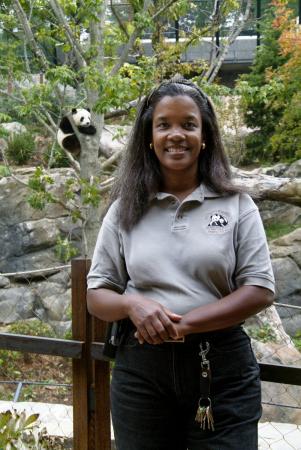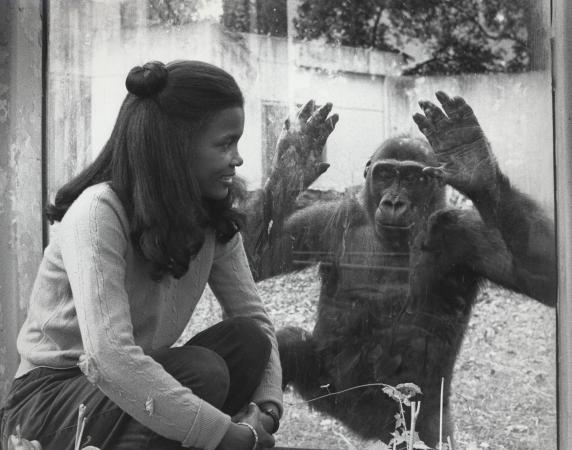During her tenure at the National Zoological Park, Lisa Stevens propelled the Zoo’s giant panda program to the forefront of global conservation efforts. At the same time, she also acted as a role model to inspire the next generation to continue these important efforts.

Stevens’ love for animals began during her childhood. With her father in the Army, their family traveled frequently, and she spent much of her childhood in Southeast Asia, where she became fascinated with the diverse array of local insects and reptiles. Recognizing her fascination, Stevens’ parents encouraged her passion with pet dogs, cats, and birds and horseback riding lessons. At the riding stables, the veterinarians working with the horses sparked Stevens’ interest in veterinary science.
Stevens earned her bachelor’s degree in zoology and pre-veterinary medicine at Michigan State University and began working as an animal keeper at the National Zoological Park in 1978. She started managing the primate program in 1981 and the giant panda program in 1987. While working, Stevens received additional training at the American Zoo and Aquarium Association’s School for Professional Management Development for Zoo and Aquarium Personnel.

For thirty years, Stevens worked as the senior curator of mammals, during which time she ran every aspect of the primate and giant panda programs. It has been just over fifteen years since Stevens oversaw the 2005 birth of Tai Shan, the Zoo’s first surviving panda cub. This work earned her the title “Panda Lady.” However, Stevens’ work encompassed so much more than that label. She oversaw daily operations, budgeting, planning, record keeping, research, education, exhibit design, and construction, and she worked with public programming and minority outreach programs.

Stevens’ work at the National Zoological Park helped open the world of science to young children from diverse backgrounds. In an interview with the Chicago Tribune, Stevens, who is African American, expressed hope that her work would introduce children of color to a very undiverse field. She said, “When kids see me doing what I'm doing, especially children of color, but all kids in general, I certainly hope that it will help them to think more broadly and to think of other possibilities and other career choices besides sort of what we're pigeonholed into.”
After her retirement in 2011, Stevens has continued to serve her community by participating in the Association of Zoos and Aquariums’ Species Survival Plan Program and has led natural history tours through Friends of the National Zoo, International Expeditions, Smithsonian Journeys, and the World Wildlife Fund. She also co-founded and serves on the board of directors of Beads For Education, Inc., which funds the education of more than 300 girls in Kenya.
Stevens’ career at the National Zoological Park and subsequent accomplishments have had remarkable impacts on conservation efforts and in inspiring future generations to continue this work. The National Zoological Park’s giant panda program that Stevens once managed continues to thrive. Tai Shan’s mother, Mei Xiang, has given birth to two more surviving cubs, Bao Bao in 2013 and Bei Bei in 2015, and she just gave birth to another cub on August 21 of this year.
Related Resources
- “Wonderful Women Wednesday: Lisa Stevens,”by Lisa Fthenakis, The Bigger Picture, Smithsonian Institution Archives
- “Learning from Tai Shan,” by Laura Tangley, Smithsonian Magazine
- “Why We Don’t Have a Baby Panda,” by Sarah Zielinksi, Smithsonian Magazine
- “Giant Panda Mama Gives Birth to Baby Cub at National Zoo Friday Evening,” by Alex Fox, Smithsonian Magazine
Produced by the Smithsonian Institution Archives. For copyright questions, please see the Terms of Use.

Leave a Comment